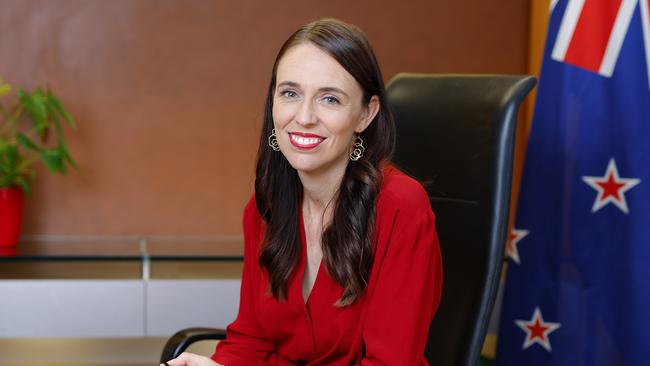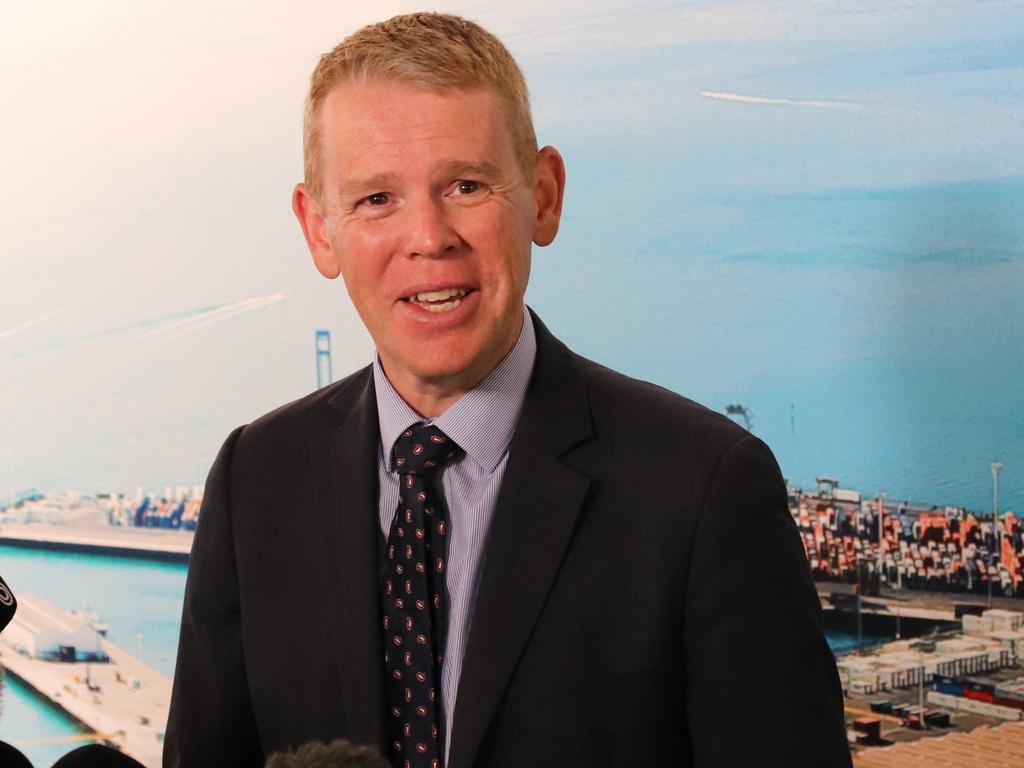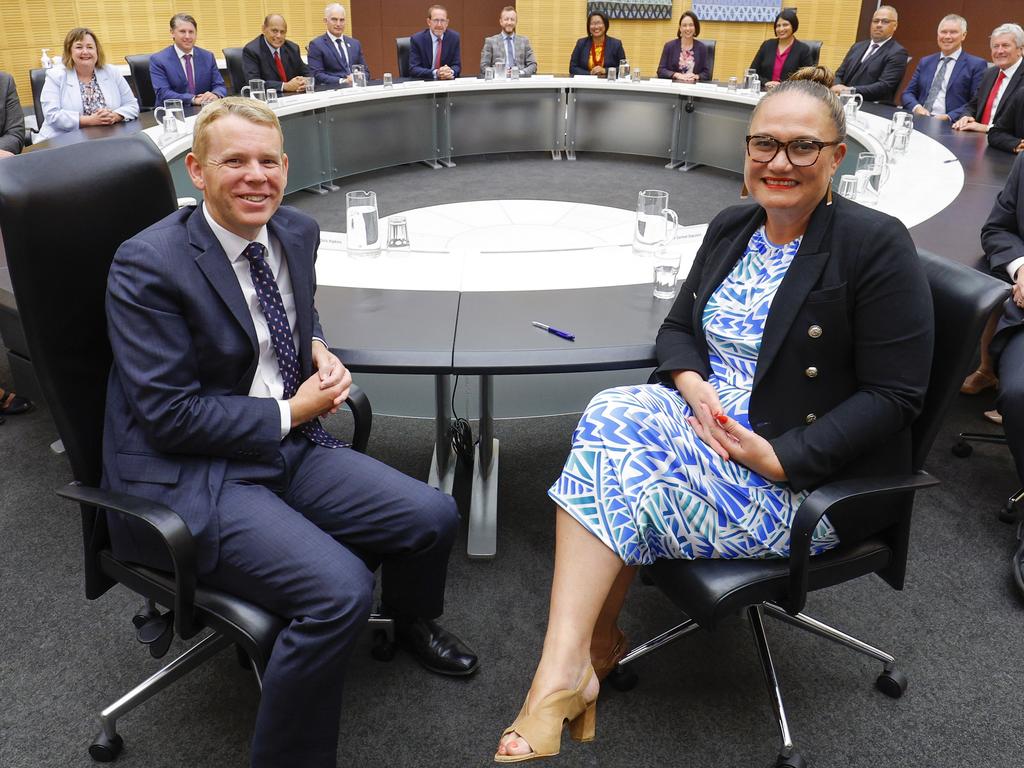
Through 2022, foreign adulation of Ardern by the left-wing global media was completely out of touch with domestic sentiment. When she quit, Ardern’s once stratospheric net favourability was -1 per cent, equal with struggling National leader Christopher Luxon.
Hipkins quickly abandoned Ardern’s most unpopular left-wing policies in a “policy bonfire” in February, with another promised. It included Ardern’s cherished hate-speech legislation, ABC-style media empire, biofuels mandate and compulsory unemployment insurance scheme.

The second “bonfire” was delayed by Cyclone Gabrielle but Hipkins has also pushed out plans to raise petrol taxes and announced that improving the quality and resilience of the roading network is Labour’s top priority for transport investment, ahead of climate-change.
For both U-turns, the main explanation was that there is a new Prime Minister.
Hipkins provided perfectly adequate practical leadership following the cyclone, but without the gush that turned voters off Ardern. There were no prime-ministerial exhortations demanding “kindness”, but plenty of talk about fixing damaged roads and railways, and reducing the danger of forestry slash. He didn’t “pick up a shovel” or “hold a hose”, but was seen supporting those who were.
The results are in. Labour narrowly leads National in every poll – including for the Taxpayers’ Union taken by Curia, National’s own pollster, and, according to government strategists, Talbot Mills, which polls for Labour.
Curia reports Hipkins’ net favourability at +33 per cent, from 54 per cent favourable and just 21 per cent unfavourable. Astonishingly, his net favourability among National votes is +13 per cent. In contrast, Luxon is at -53 per cent among Labour voters.

That suggests there’s room for Hipkins to bring more soft National voters over the centre-line.
In all polls since his accession, Labour has improved on every measure of which party is best to handle the issues most worrying voters. Curia has Labour moving further ahead on health, leadership and jobs, while National’s leads on law and order, inflation and the economy have halved.
Ipsos concurs, giving the traditionally conservative National just a three-point lead on inflation and the cost of living, and only five points on law and order.
The polling company which most accurately picked New Zealand’s 2017 and 2020 elections, Melbourne-based Roy Morgan, reported today a dead-heat between Labour and the Greens, and National and Act, its classical-liberal ally. According to Roy Morgan, the small Māori Party would hold the balance of power.
But today’s Māori Party isn’t the relatively conservative outfit that was uneasily part of John Key’s National Government from 2008 to 2017. Today’s incarnation, under co-leaders Rawiri Waititi and Debbie Ngarewa-Packer, is ultra-radical and makes clear it will back Labour-Green in 2023. It wouldn’t survive if it didn’t.
Ironically, that means Hipkins’ move to the centre has so far empowered the radical left.
Polls suggest that, for the first time, Labour couldn’t govern except with the support of both the Greens and Māori Party, with no centrist party like NZ First or the old United Future to balance the far left as in Helen Clark’s day and Ardern’s first term.

National is operating a zero-target strategy under Luxon, chosen specifically as best to beat Ardern. But Hipkins has become the anti-Ardern candidate and Luxon has achieved no purchase on voters. Like Malcolm Turnbull, his policy announcements are usually to the left of his red opponents but fail to impress voters wanting change. His message discipline is woeful, with even the most rusted-on National voters struggling to explain what the party offers.
National will likely turn to a scare campaign against the three-headed Labour-Green-Māori Party taniwha (serpent or dragon), but two can play that game and centrist voters are just as afraid of Act.
Moreover, National and Labour have tried scare tactics regularly since New Zealand’s proportional representation system began in 1996. They usually backfire. In 2020, before her popularity began plunging in 2021, Ardern successfully communicated to moderate National voters that the best way to keep the Greens and Māori Party out of government was by voting Labour. The message would be even more credible coming from Hipkins.
National’s last hope is the economy crashing before the October 14 election. But that means convincing voters it is best to protect jobs, fight inflation and manage the economy. Even on those issues, it risks being overtaken by Labour.
A leadership change to Luxon’s more popular deputy, Nicola Willis, or his education spokesperson, Erica Stanford, can’t be ruled out. It worked for Labour in 2017.
Matthew Hooton is a political and public affairs strategist based in Auckland and completing his PhD thesis on “Conservatism & Change” at the University of Auckland. His political clients have included the NZ National Party, NZ Act Party and, currently, the Mayor of Auckland. These views are his own.








Jacinda Ardern’s resignation and Prime Minister Chris Hipkins’ bold move to the centre has put Labour back ahead in New Zealand’s polls. It may deliver the country its most left-wing government ever this October.